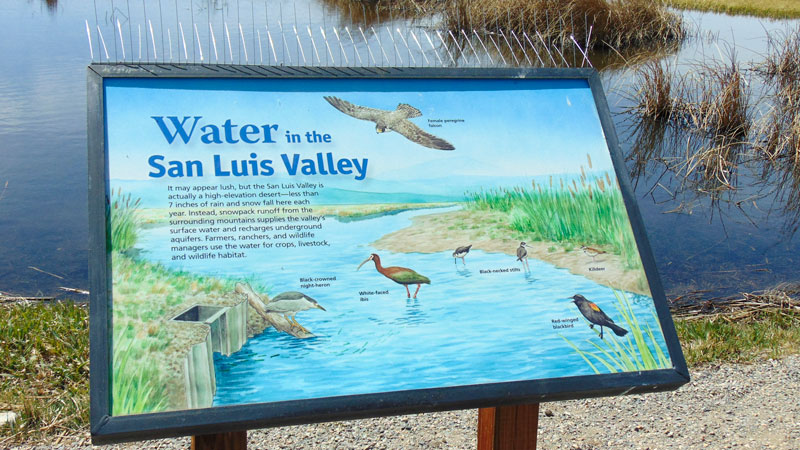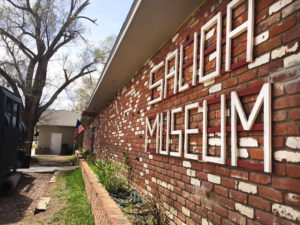Article and photos by Anthony Guerrero
South of Monte Vista in the San Luis Valley is a prime opportunity to view nature up close. The Monte Vista National Wildlife Refuge is a serene location mostly of wetlands featuring waterfowl and other water-dependent birds. The refuge is famous, hosting to up to 27,000 Sandhill Cranes every spring (Mid-March) and every fall (Mid-October) as they migrate to their northern breeding grounds.
The refuge is part of the larger San Luis Valley National Wildlife Refuge Complex. More than 200 species of birds are provided feeding, resting and breeding habitats in the area. The wetlands are artificially made by using the plentiful water resources of the Valley from nearby agricultural sources, mountains, artesian wells and rivers.
In the springtime, visitors will mostly view Canada geese and ducks. Different seasons bring different species. In the summer, nesting shorebirds such as American avocets and white-faced ibis can be seen. Mostly in the fall but year-round, deer, elk, coyotes, porcupines and rabbits abound. Deer and elk seek refuge from hunters, although waterfowl and small game hunting is permitted in season.
[InContentAdTwo]
In the winter, much of the waterfowl leaves the San Luis Valley. Raptors then descend upon the 14,843 acres of the refuge. Common sights include short-eared owls, northern harriers, rough-legged hawks and great-horned owls.
The refuge is meant to preserve wildlife for the enjoyment of future generations, therefore much of the lands are not accessible to the public in order to protect migrating waterfowl. There are still incredible opportunities and permitted activities at the refuge for visitors to enjoy. Wildlife photography is a popular pastime. Several interpretive panels are set up throughout the refuge explaining the natural environments and what animals are hoped to be seen.
 An auto-tour route provides one of the best ways to enjoy the wildlife refuge. It is four miles long and accessible by vehicle (recommended) or by foot. The route gives the best way to enjoy the wildlife and many will walk or fly right next to visitors to their home. Along the route there is also a great nature trail that puts visitors in the middle of the local habitats. Hikers on the trail will be rewarded with seeing faces of the birds and having small critters run across their toes. Viewing areas, tables and benches are offered all along the nature trail.
An auto-tour route provides one of the best ways to enjoy the wildlife refuge. It is four miles long and accessible by vehicle (recommended) or by foot. The route gives the best way to enjoy the wildlife and many will walk or fly right next to visitors to their home. Along the route there is also a great nature trail that puts visitors in the middle of the local habitats. Hikers on the trail will be rewarded with seeing faces of the birds and having small critters run across their toes. Viewing areas, tables and benches are offered all along the nature trail.
The Refuge is open from dawn until dusk. The auto-tour route and nature trail are open to the public year-round. Overnight parking, camping, fires, motorized trail bikes and off-road vehicles are prohibited on the Refuge roads and trail.
Due to possible extreme weather conditions at any season in the Valley, it is important to be prepared. Be sure to wear sturdy shoes for land excursions, dress for the weather or have access to weather-resistant clothing, bring water, food, hat, sunglasses, sunscreen, insect repellent and any other items that will make a visit more enjoyable.
GETTING THERE: Drive south on Colorado Hwy. 15 (Gunbarrel Road) for six miles to the entrance of the auto-tour route. The small office and visitor contact station at the Refuge is located at the start of the auto-tour route. The visitor contact station is volunteer-run and not open most days. For more information, please call 719-589-4021.


